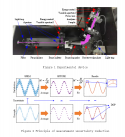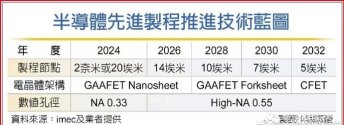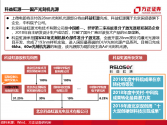The Information Optics and Optoelectronics Technology Laboratory of Shanghai Institute of Optics and Fine Mechanics, Chinese Academy of Sciences has made progress in high-precision polarization measurement in the deep ultraviolet band. The researchers reported a performance measurement technique for depolarizers at a wavelength of 193nm. Brewster wedges were used to achieve high extinction ratio and large separation angle polarization of wide beams with a wavelength of 193nm. The design of prepolarization and light splitting overcomes the Measuring the fluctuating influence of the light source, based on the prior physical laws, making full use of all the measurement data significantly improves the measurement accuracy.
The relevant research results were published on Optics & Laser Technology under the title of "Performance measurement technique for 193-nm depolarizer" .
Polarization control is a key technology of 193nm immersion lithography. Among many polarization control components, depolarizer is an important component. The existing 193nm depolarizer performance measurement method is usually based on the online measurement of the lithography machine system. Since the depolarizer used in the lithography machine has the characteristics of large beam size and small polarization degree, offline measurement is particularly difficult. The reasons are as follows: there are very few birefringent materials available in this wavelength band, which makes it difficult for the polarizer to meet the measurement requirements in terms of separation angle and extinction ratio; the excimer light source used for the measurement has significant light intensity fluctuations ; The accuracy of the ultraviolet energy meter is far from meeting the measurement requirements.
In response to the above difficulties, the researchers made breakthroughs one by one, and finally realized the high-precision performance measurement of the 193nm depolarizer. The researchers bypassed the traditional principle of using material birefringence to polarize, and used Brewster's law to use fused silica wedges to achieve high extinction ratio and large separation angle polarization for wide beams with a wavelength of 193nm. This scheme does not depend on the transmittance and birefringence of the material, and can achieve a high extinction ratio of more than 5000:1 within the error range of the incident angle of ±0.5°; due to the existence of Brewster's law and wedge angle, in Only the desired polarized beam emerges over a relatively large angular range. In addition, the researchers designed a pre-polarization and light-splitting design, which greatly reduces the influence of the polarization state fluctuation and light intensity fluctuation of the light source on the measurement. Aiming at the key problem that the measurement accuracy is difficult to meet the requirements, the researchers cleverly introduced prior knowledge in the measurement, that is, the outgoing light must be divided into depolarization/circular polarization components and linear polarization components according to polarization decomposition, of which the depolarization/circular polarization components With the same light intensity at any analyzing angle, the linear deviation component obeys Marius' law. Based on this prior knowledge, a sinusoidal curve with a given period can be used to fit the measured data to obtain an analyzer intensity curve that is close to the true value. The researchers theoretically predicted the absolute error range and uncertainty level of the measurement of the DOP of the depolarizer, which are highly consistent with the experimental results, both of which are less than 0.1%. After single-point repeated measurement and overall fitting, the measurement uncertainty is significantly reduced. In the experiment, the best measurement uncertainty is as low as 0.058% (theoretical expected value is 0.053%), while the uncertainty of the energy meter used up to 8%.




